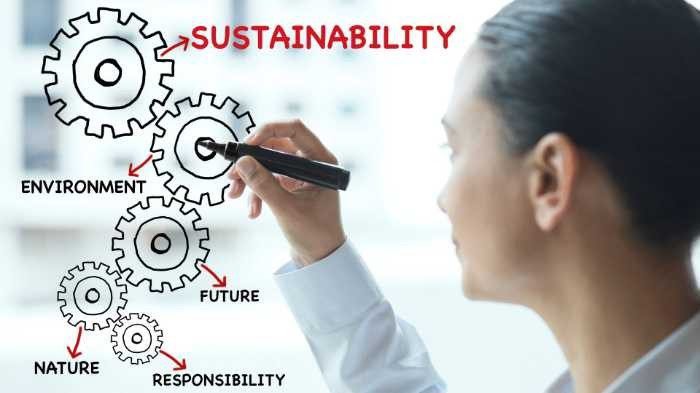Sustainability reports are becoming an increasingly important way for companies to communicate their environmental and social responsibility initiatives to stakeholders. By reducing their environmental impact and increasing transparency, companies can improve their reputation and bottom line. In this blog post, we will discuss the benefits of sustainability reporting and how to create a report that is both informative and engaging.
- What are sustainability reports and why are they important?
- The benefits of sustainability reporting
- 1. Boosting company reputation and image
- 2. Improving communication and engagement with stakeholders
- 3. Reducing business risks and costs
- 4. Driving innovation and growth
- 5. Improving overall sustainability performance
- 6. Attract and retain top talent
- 7. Build brand loyalty
- 8. Improved financial performance
- How to create a sustainability report?
- 1. Define your purpose
- 2. Gather data
- 3. Analyze your data
- 4. Write your report
- 5. Publish your report
- What is the global reporting initiative?
- Tips for reducing environmental impact
- What is corporate social responsibility?
- What is a CSR report?
- Conclusion
- FAQs
What are sustainability reports and why are they important?
Sustainability reports are documents that publicly disclose an organization’s environmental, social, and economic performance. They help organizations to communicate their sustainability efforts and progress to investors, employees, customers, and other key stakeholders. Reports also provide essential data that can be used to assess an organization’s impact on the environment and society.
Increasingly, investors are using sustainability reports to make investment decisions. In fact, some major stock exchanges now require listed companies to publish sustainability reports. Because of this growing demand, more and more organizations are choosing to produce sustainability reports. While there is no standard format for these reports, they typically include information on an organization’s carbon footprint, waste management practices, water usage, and employee engagement.
By reading sustainability reports, stakeholders can gain a better understanding of an organization’s commitment to sustainable development and its progress towards achieving its goals.
The benefits of sustainability reporting

Sustainability reporting is a voluntary but important disclosure all companies can provide to showcase their progress toward environmental, social, and governance goals. Some examples of benefits sustainability reporting can provide are:
1. Boosting company reputation and image
Sustainability reporting can also help to boost a company’s reputation and image. In today’s world, more and more people are interested in doing business with companies that are socially and environmentally responsible. By disclosing its sustainability efforts, a company can show that it is committed to making positive change. This can lead to improved relations with shareholders, employees, and the general public.
In fact, some studies have shown that companies with strong sustainability profiles have outperformed the general stock market. As such, sustainability reporting can provide a valuable return on investment for companies that are looking to improve their image and reputation.
2. Improving communication and engagement with stakeholders
By being transparent about what sustainability initiatives the company is undertaking, can help open up lines of communication with interested parties. This two-way dialogue can, in turn, help improve the effectiveness of the company’s sustainability strategy. Furthermore, it can also lead to new opportunities for partnerships and collaborations.
With sustainability reporting becoming more commonplace, it is important for companies to consider how they can make the most of this opportunity. For some, it may be sufficient to simply meet the minimum requirements. However, others may choose to use this as an opportunity to go above and beyond, using it as a chance to build communication and engagement with stakeholders. Ultimately, the decision will come down to what makes sense for the company in question and its specific goals.
3. Reducing business risks and costs
By addressing potential social and environmental challenges early on, companies can save themselves from facing reputational damage or regulatory penalties down the road. Additionally, making sustainability improvements can also help companies reduce their resource use and waste output, leading to cost savings. In fact, a study by the World Business Council for Sustainable Development found that sustainability reporting companies outperformed their non-sustainable counterparts by as much as 30 percent, as stated in their financial reports.
Therefore, it is clear that sustainability reporting is beneficial not only for the environment and society but also for businesses themselves. As the world moves toward a more sustainable future, we can expect to see more and more companies adopting this important practice to reduce business risks and cost-saving.
You can’t improve what you don’t measure.
Free Verified Carbon Calculators.
Erase Your Carbon Footprint in less than 5 Minutes
Personal Carbon Footprint Calculator
Business Carbon Footprint Calculator
4. Driving innovation and growth
As sustainability becomes more important to consumers and investors, companies that proactively address these issues and complete sustainable financial reporting on time can gain a competitive edge. Additionally, working on sustainability can spur companies to develop new products or services that tap into markets for sustainable goods and services. This type of innovation can help sustainability reporting companies grow while also meeting consumer demand for sustainable products. Most importantly, corporate sustainability is bringing innovation and growth to developing countries.
5. Improving overall sustainability performance
One important benefit of sustainability reporting is that it can help organizations to improve their overall sustainability performance. By publicly disclosing information about their environmental and social impact, companies are under pressure to continuously improve their practices. In addition, through sustainability reporting, the chief sustainability officer can help to identify potential areas for improvement and track progress over time. As a result, organizations that commit to transparency and accountability are likely to see improvements in their sustainability performance.
Overall, there are many reasons why companies should consider disclosing their sustainability progress through reporting. When done well, it can provide numerous benefits that help to improve business operations as well as the sustainable global economy while also benefiting society and the environment.
6. Attract and retain top talent
As the job market becomes increasingly competitive, forward-thinking companies are looking for ways to attract and retain top talent. One way to set yourself apart from the competition is to commit to sustainability reporting. Sustainability reporting demonstrates a commitment to environmental and social responsibility, which is an increasingly important consideration for job seekers. In addition, sustainability reporting can help to engage employees and create a sense of buy-in for company initiatives. By commitment to sustainability reporting, you can attract top talent and create a more engaged workforce.
Overall, there are many reasons why companies should consider disclosing their sustainability progress through reporting. When done well, it can provide numerous benefits that help to improve business operations as well as the sustainable global economy while also benefiting society and the environment.
7. Build brand loyalty
Sustainability reporting can help to build brand loyalty. In today’s competitive marketplace, consumers have more choices than ever before. They can choose to buy products from companies that are committed to sustainable practices, or they can choose to buy from companies that don’t seem to care about the environment. By publishing a sustainability report, companies can show their consumers that they are committed to making positive changes. In turn, this can help to build brand loyalty and encourage consumers to keep buying from the company in the future.
8. Improved financial performance
Sustainability reporting can result in improved financial performance. By measuring and publicly disclosing their environmental and social impacts, companies can signal to investors that they are managing risks and opportunities in a responsible manner. This can lead to improved access to capital, higher share prices, and reduced borrowing costs. Ultimately, sustainability reporting provides financial benefits for both companies and investors.
How to create a sustainability report?

Creating a sustainability report may seem daunting, but with a little planning, it can be a relatively straightforward process. Here are the steps you’ll need to take:
1. Define your purpose
The first step in creating a sustainability report is to define your purpose. Why are you creating a sustainability report? What do you hope to achieve? Answering these questions will help to guide the rest of the process. Do you want to communicate your company’s commitment to sustainability? Improve your environmental performance? Or engage employees in your sustainability efforts? Once you have a clear idea of your purpose, you can begin to develop key messages and identify the audience for your report. Keep your purpose in mind as you move through the rest of the process; it will help you stay on track and produce a report that is truly impactful.
2. Gather data
To create an effective sustainability report, you’ll need to collect data on a variety of topics. This data will help you track your progress and identify any areas where you could improve. Emissions, waste, water use, and energy consumption are all important factors to consider. By gathering data on these topics, you’ll be able to create a report that accurately captures your organization’s impact on the environment. With this information in hand, you can make informed decisions about how to reduce your footprint and operate more sustainably.
3. Analyze your data
The next step is to analyze your data and identify any patterns or trends. This can be done by looking at the data in aggregate or by looking at specific data sets. Once you have identified any patterns or trends, you can start to formulate hypotheses about why these patterns exist. For example, if you notice that your energy consumption is higher in the winter months, you may hypothesize that this is due to increased heating needs. Once you have formulated hypotheses, you can begin to test them. This can be done through further analysis of your data or by conducting experiments. After you have analyzed your data and formulated hypotheses, you can start to write your sustainability report.
4. Write your report
When it comes to writing a sustainability report, the most important thing is, to be honest and transparent. Begin by outlining what you want to include in your report. Then, start writing! Be sure to focus on both the positive aspects of your sustainability efforts as well as areas where you could improve. Remember, the goal is to create a document that accurately reflects your company’s progress toward sustainable practices. With that in mind, don’t be afraid to be candid; this is an important step in the journey towards a more sustainable future.
5. Publish your report
Now that you’ve completed your sustainability report, it’s time to share it with the world! You can publish it online or print it out and distribute it to interested parties. Either way, making your report public is an important step in promoting transparency and accountability. Publishing your report also allows others to learn from your successes and challenges and to see how they can improve their own sustainability efforts. So don’t hesitate, get your report out there and start making a difference!
Creating a sustainability report can be a great way to showcase your company’s efforts and track your progress over time. By following the steps outlined above, you can create a detailed and informative report that will be useful for years to come.
What is the global reporting initiative?
The Global Reporting Initiative (GRI) is a non-profit organization that provides guidance for companies and organizations who want to voluntarily report their economic, environmental, and social performance. The GRI was founded in 1997 with the goal of developing a globally accepted Framework for reporting. The GRI has since become the most widely used guideline for sustainability reporting.
The GRI Framework is based on the “triple bottom line” approach, which takes into account the economic, environmental, and social impact of an organization’s activities. The Framework is designed to be flexible so that it can be used by organizations of all sizes and in all sectors.
The GRI also offers training and support to help organizations implement the Framework. To date, more than 10,000 organizations have used the GRI Framework to produce sustainability reports.
Go Carbon Neutral – in only 3 Minutes!
Tips for reducing environmental impact
Here are a few tips for reducing the environmental impact of your business:
- Conduct a comprehensive baseline assessment of your company’s emissions and resource use. This will help you identify where there are opportunities for improvement.
- Set emissions reduction targets that are ambitious yet achievable. Publicly disclosing your targets can help create accountability and motivate employees to reach them.
- Implement energy efficiency measures throughout your operations. This can help save money while also reducing your carbon footprint.
- Make sustainable procurement choices, such as buying recycled materials or investing in green infrastructure.
- Educate employees about sustainability and engage them in creating solutions. Creating a culture of sustainability will help you achieve your environmental goals.
- Communicate your sustainability efforts externally, whether through traditional media or social media channels. This can increase awareness of your brand and build trust with stakeholders.
By following these tips, you can reduce your company’s environmental impact and increase corporate transparency.
What is corporate social responsibility?
Corporate social responsibility (CSR) is a company’s commitment to operating in an ethical and sustainable manner. This includes taking into account the impact of its business activities on employees, customers, suppliers, shareholders, and the wider community. CSR initiatives can take many different forms, but they all share the goal of making a positive contribution to society while also benefiting the company’s performance.
While some may see CSR reporting as simply a philanthropic endeavor, it can also be seen as a smart business strategy. By investing in CSR initiatives, companies can improve their public image, attract and retain top talent, and build brand loyalty. In today’s increasingly competitive business landscape, those who are able to successfully balance profitability with social responsibility are likely to be the most successful in the long run.
What is a CSR report?
A CSR report is a document that provides information on a company’s environmental, social, and economic performance. Often, CSR reports are prepared in accordance with internationally recognized standards, such as the GRI guidelines. CSR reporting helps most companies communicate their efforts to address important sustainability issues, and it can also be used to benchmark performance and track progress over time. In recent years, there has been a growing demand for CSR reports from investors, customers, and other stakeholders. As a result, an increasing number of companies are creating CSR reports as part of their overall communication strategy.
Conclusion
Sustainability reports can play an important role in reducing environmental impact and increasing corporate transparency. By following the tips we’ve outlined in this article, you can create a report that is informative and engaging for stakeholders. Additionally, using internationally recognized standards such as the GRI guidelines can help ensure your report meets best practices. Additionally, CSR reports can help you benchmark your company’s performance and track progress over time.
FAQs

What is corporate citizenship?
Corporate citizenship is the responsibility of businesses to act in ways that are ethical and contribute to the well-being of employees, shareholders, and the community. This includes reducing environmental impact, being a good steward of natural resources, and treating employees fairly. Corporate citizenship is sometimes also called responsible business or sustainable business.
What is the role of Harvard Business School in the sustainable global economy?
Harvard Business School offers online courses on sustainability that help businesses to operate in a more sustainable way. The courses cover topics such as environmental management, sustainable supply chain management, and corporate social responsibility. In addition, the school provides research and advice to businesses on how to make their operations more sustainable. As the world moves toward a more sustainable future, Harvard Business School is playing an important role in helping businesses to transition to a new model of operation.
What is non-financial reporting?
Non-financial reporting is a type of corporate disclosure that focuses on a company’s social and environmental performance rather than its financial results. Such reporting is often used to measure a company’s sustainability and assess its impact on society.
What is ESG?
ESG investing is an investment strategy that considers environmental, social, and governance factors in order to generate long-term sustainable returns. ESG data can be used to identify and assess a company’s current and future risks, as well as its overall sustainability. When used correctly, ESG data can help investors make more informed investment decisions.
How does sustainability impact supply chains?
Sustainability has become an increasingly important consideration for businesses in recent years. Consumers are increasingly interested in buying products that have been sourced responsibly, and companies are under pressure to reduce their environmental impact. As a result, sustainability is playing an increasingly important role in supply chains. Businesses are working to source raw materials from suppliers that have demonstrated commitment to environmental, social, and governance (ESG) principles. In addition, they are working to reduce emissions and waste throughout the supply chain. As sustainability becomes more of a priority, it is likely to have a significant impact on supply chains.
You should also read…
What are the 3 components of the triple bottom line approach?

Dean Emerick is a curator on sustainability issues with ESG The Report, an online resource for SMEs and Investment professionals focusing on ESG principles. Their primary goal is to help middle-market companies automate Impact Reporting with ESG Software. Leveraging the power of AI, machine learning, and AWS to transition to a sustainable business model. Serving clients in the United States, Canada, UK, Europe, and the global community. If you want to get started, don’t forget to Get the Checklist! ✅
